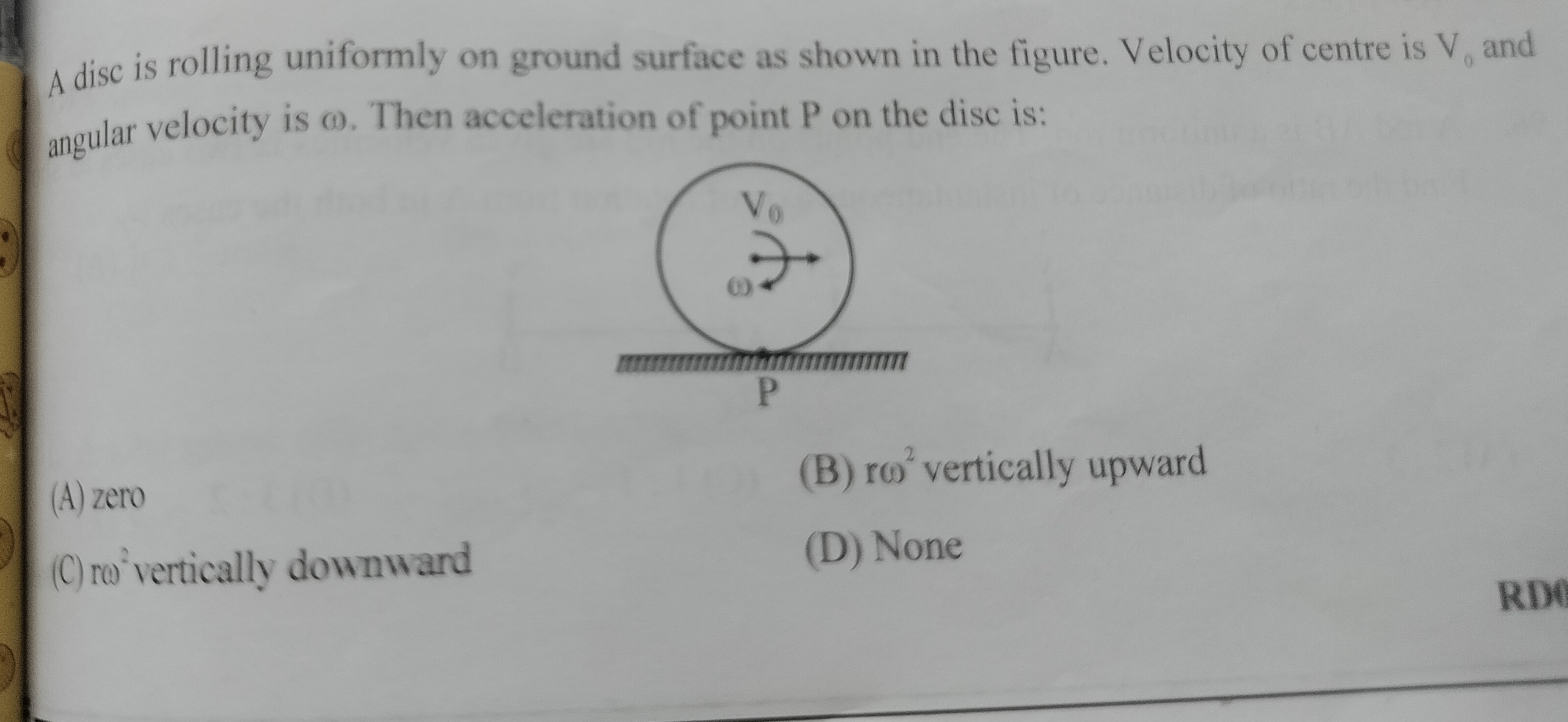Question
Question: A disc is rolling uniformly on ground surface as shown in the figure. Velocity of centre is $V_0$ an...
A disc is rolling uniformly on ground surface as shown in the figure. Velocity of centre is V0 and angular velocity is ω. Then acceleration of point P on the disc is:

zero
r\omega^2 vertically upward
r\omega^2 vertically downward
None
r\omega^2 vertically upward
Solution
The disc is rolling uniformly, which means the acceleration of the center of the disc (aC) is zero and the angular acceleration (α) is also zero. The acceleration of a point P on the disc is given by aP=aC+aP,rot. Since aC=0, we have aP=aP,rot. The rotational acceleration is given by aP,rot=α×rP/C+ω×(ω×rP/C). As α=0, this simplifies to aP=ω×(ω×rP/C). This is the centripetal acceleration. For point P at the bottom of the disc, the position vector relative to the center is rP/C pointing downwards. The term ω×(ω×rP/C) results in an acceleration directed towards the center of rotation. In this case, with ω directed into the page (for clockwise rotation) and rP/C pointing downwards, the resultant acceleration is rω2 vertically upward.
